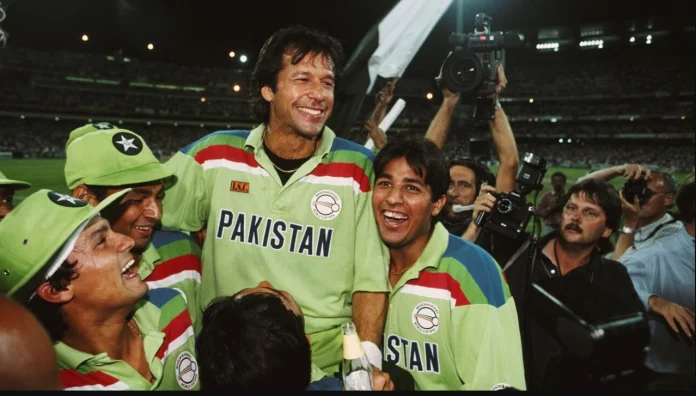Biggest game changers of the 1992 World Cup: It was for the first time that the World Cup was staged after a gap of 5 years. The 1992 World Cup was a tournament of many firsts. It was in this edition that the number of teams participating extended beyond 8 (9 teams in total). South Africa made their World Cup debut in this edition. The teams weren’t divided into groups. Each of the nine teams played each other and the top four went into the semis.
For more Cricket News and Updates Join our Telegram Channel
A World Cup full of newness:
The novelties didn’t just end there. It was for the first time in the history of the tournament that the World Cup was played under lights. Teams wore coloured jerseys and the ball was white. It was almost stepping into the unknown. Australia and New Zealand were the joint hosts for this edition which was yet another first. Not many teams and captains adapted quickly to the changing dynamics and the few who did excel in this edition.
We look at two of the biggest game changers of the 1992 World Cup:
#1 Martin Crowe
It was this World Cup that started the tradition of awarding the best player of the World Cup. Martin Crowe was officially announced as the player of the series at the end of the World Cup final. The award was not just a result of his numbers with the bat. It was also down to his tactical nous and the ability to stay ahead of the game.
Martin Crowe had an outstanding World Cup with the bat. He was the highest run-getter scoring 456 runs in 9 games at an average of 64. Crowe’s strike rate of 90.83 during the World Cup remains a highlight.
His brilliant leadership qualities:
The other facet that predominantly made news was his leadership. Despite being co-hosts, nobody had expected New Zealand to outsmart the big guns. They weren’t on many people’s lists when it came to the top four. It was the genius of Crowe that saw New Zealand get on a roll in the World Cup. They topped the group table with 7 wins and 1 loss. New Zealand won all their first seven games to put their feet into the semifinals.
His quirky innovations:
Crowe’s idea of sending Mark Greatbatch as an opener to maximise field restrictions came in for much appreciation. In bowling, he asked Dipak Patel to bowl with the new ball. This move took everyone by surprise as it was probably the first time a spinner operated with the new ball in ODIs. The fact that the World Cup was played in Australia and New Zealand made this decision look even bolder.
#2 Wasim Akram
He had established himself as a potent force until the World Cup came about. The 1992 World Cup though remains a crowning moment in Wasim Akram’s glorious cricketing career. He remained an understudy to Imran Khan ever since he made his debut. The 1992 World Cup final was a passing of the baton from one Pakistani legend to another.
Akram’s big dance in Khan’s last cricketing lap:
Pakistan was called the cornered tigers and Khan was their charismatic leader. He literally had handheld Akram and Waqar Younis during their younger days. Akram wanted to step up for his captain on what might be their biggest cricketing day ever.
Pakistan batted first against England in the final. Their innings appeared to be going nowhere before the heroics from Inzamam-ul-Haq and Wasim Akram saw them post a challenging score of 249-6. Akram in particular smashed a quick-fire 18-ball 33 laced with four fours to hand Pakistan the momentum going into the second innings.
Sultan swings it Pakistan’s way:
If he was effective with the bat, he was deadlier with the ball. Akram removed another world-class allrounder Ian Botham early into the innings. He returned in the 35th over to literally kill the game with an outstanding burst of reverse swing bowling. Akram removed Allan Lamb and Chris Lewis off successive deliveries to put Pakistan firmly in place for their maiden World Cup win.
It remains one of the greatest all-round performances in any World Cup final across formats. Akram unsurprisingly was also the leading wicket-taker in the tournament (18 wickets).


